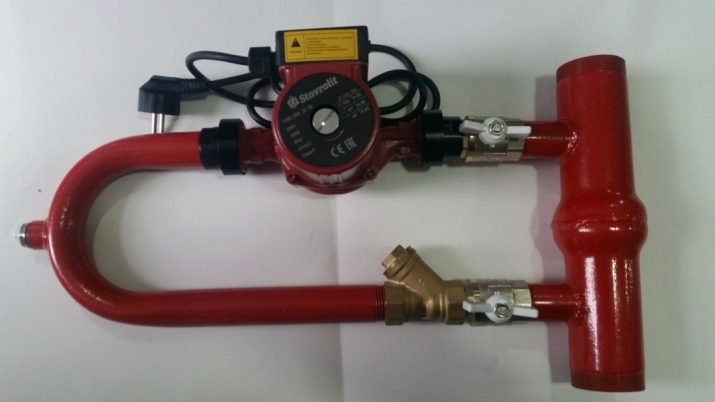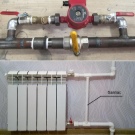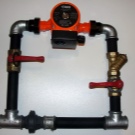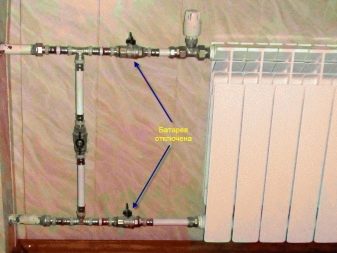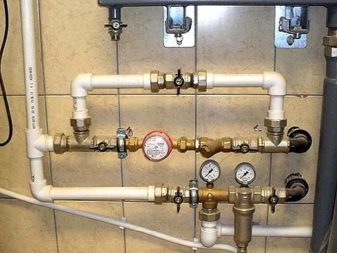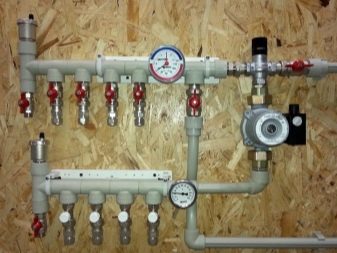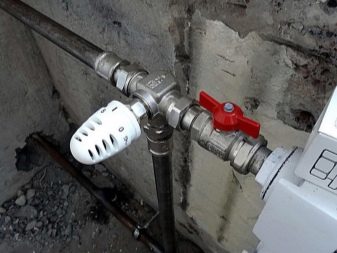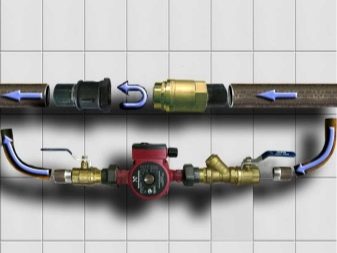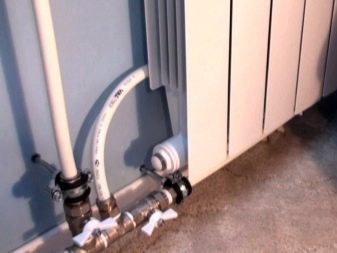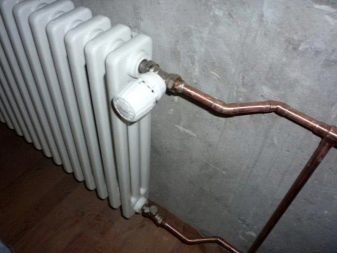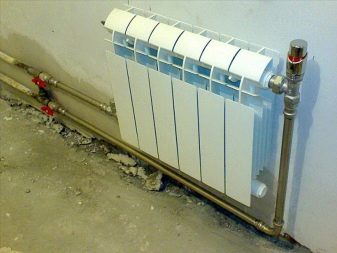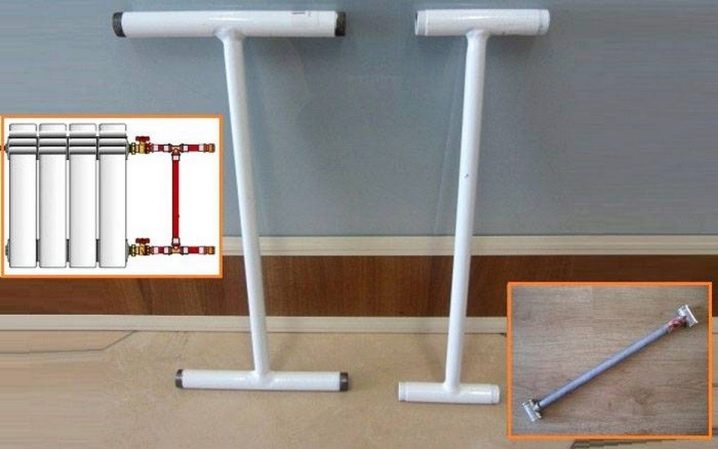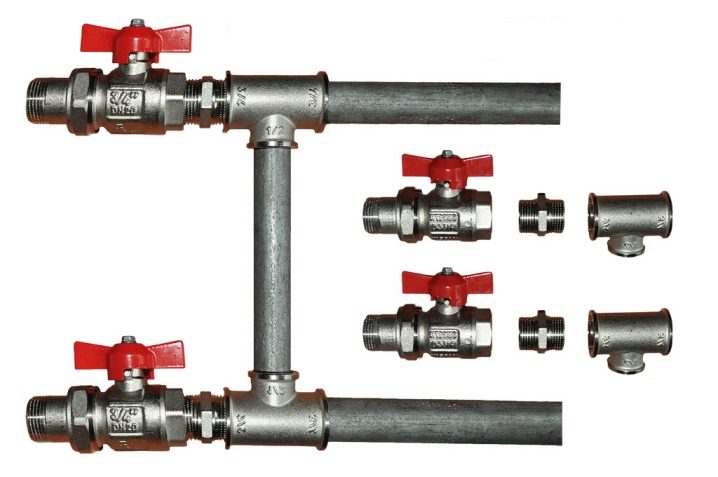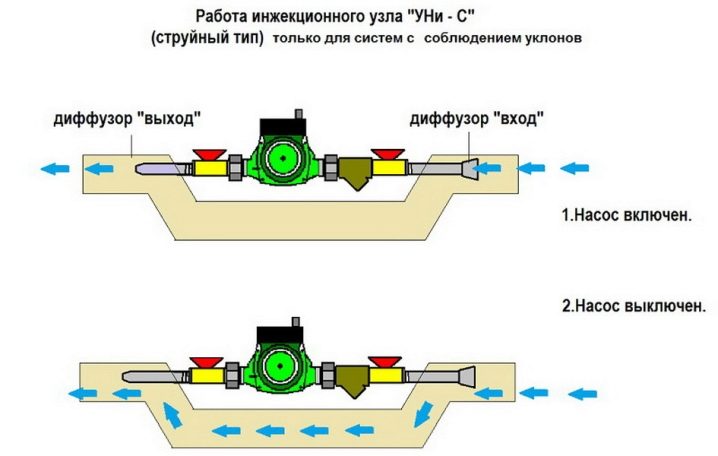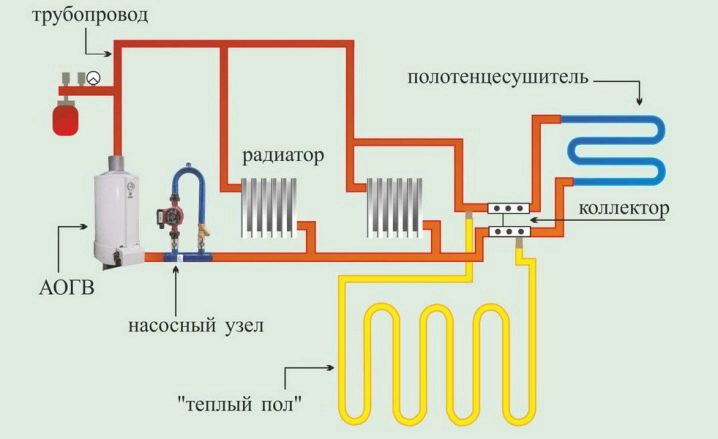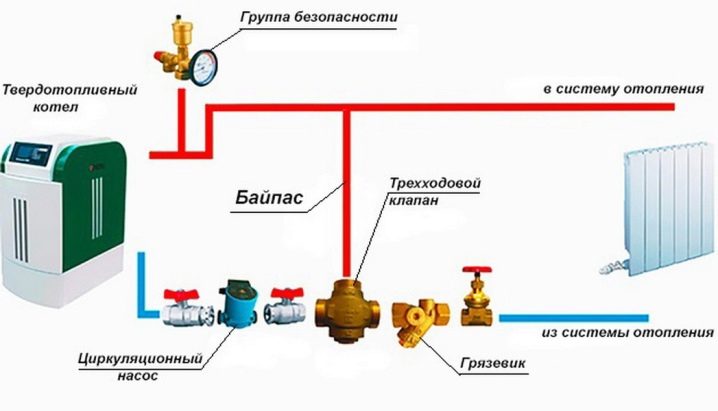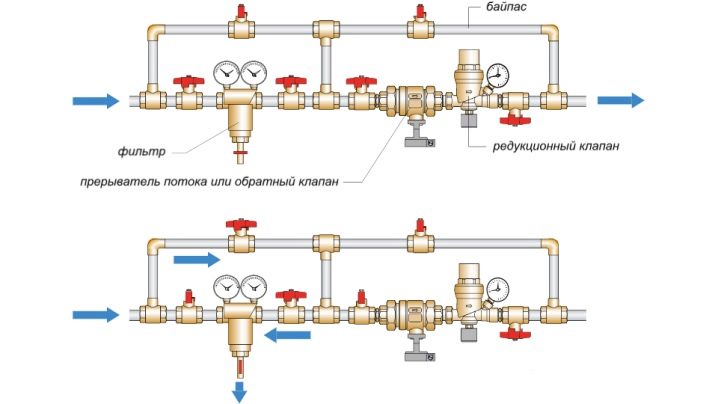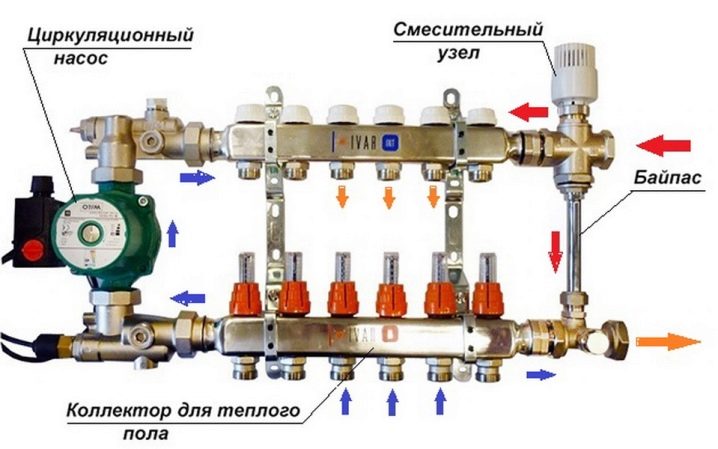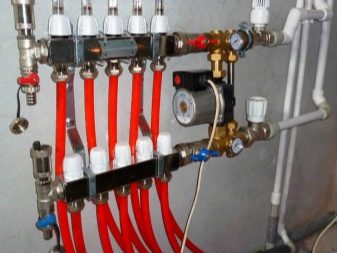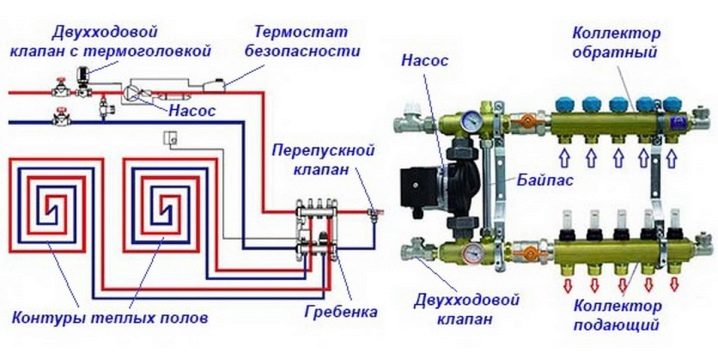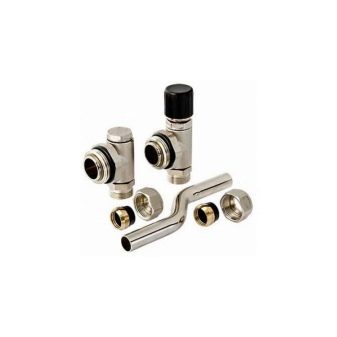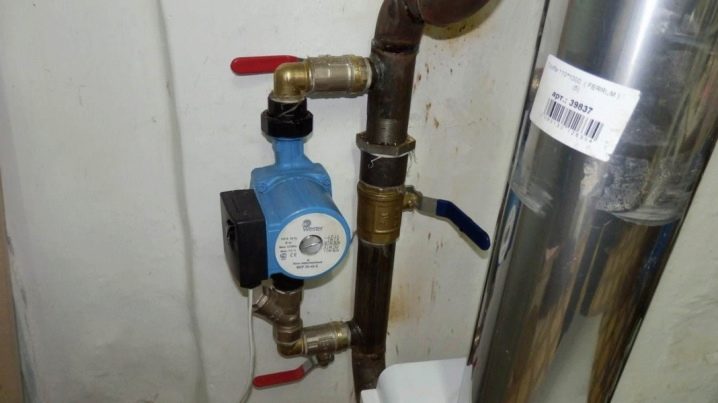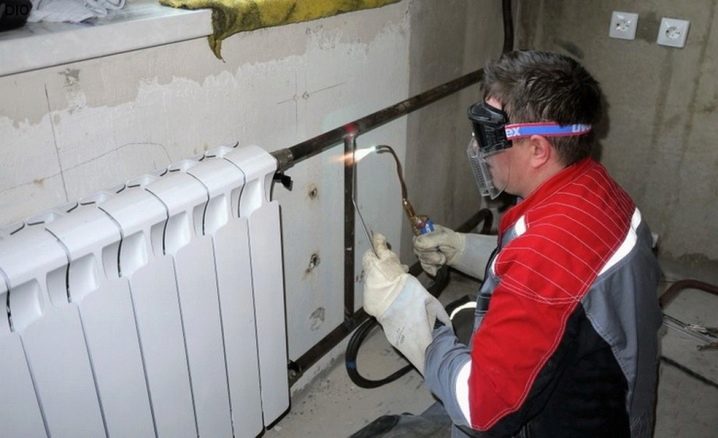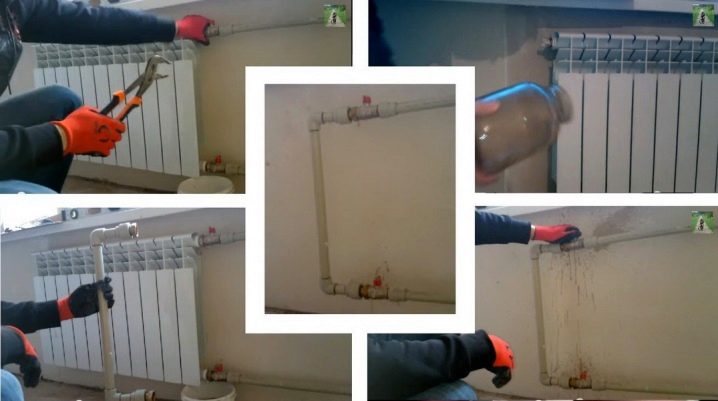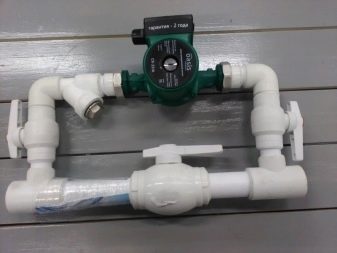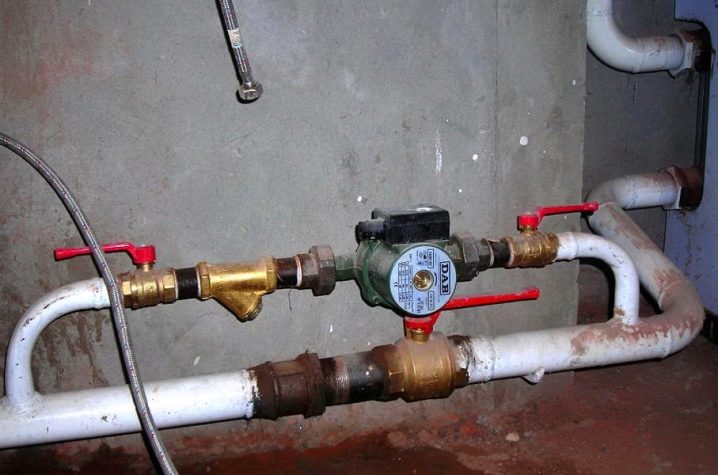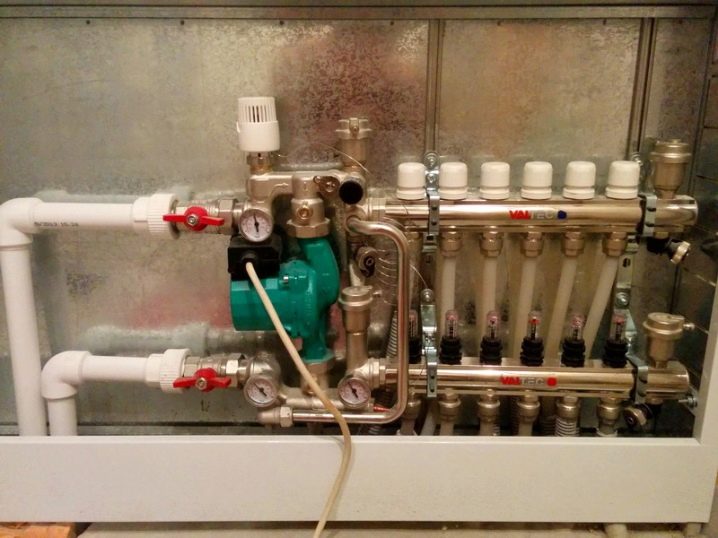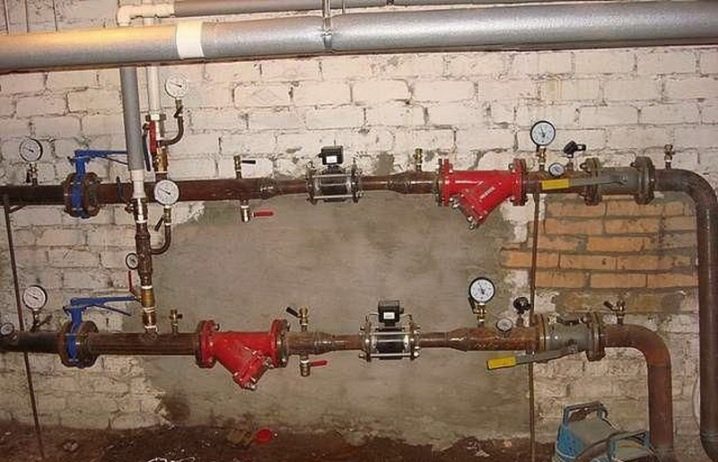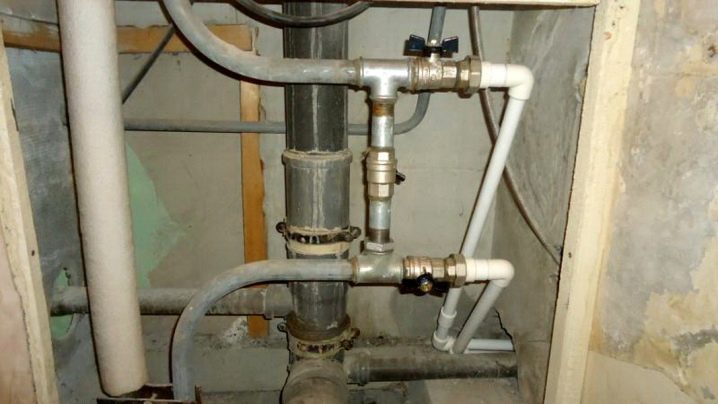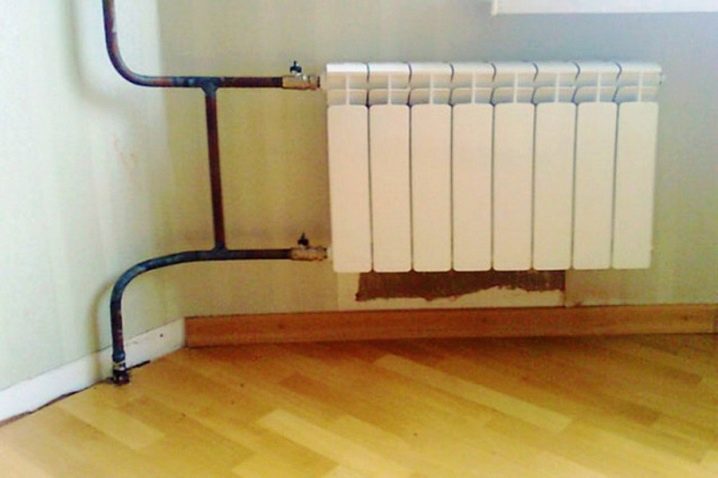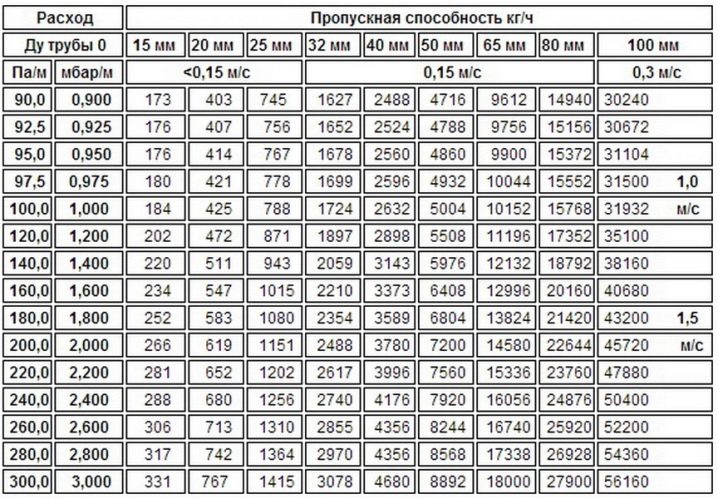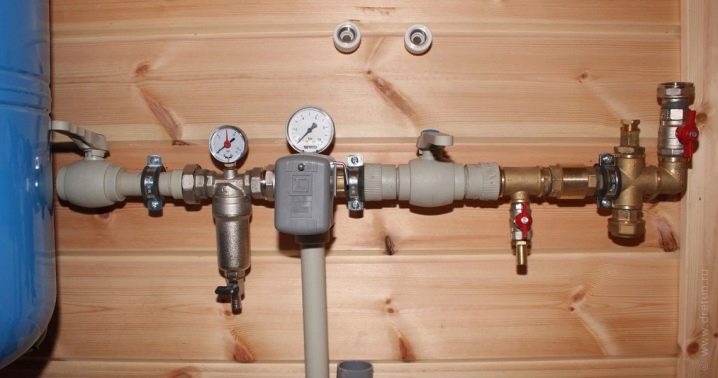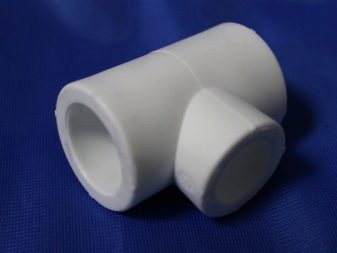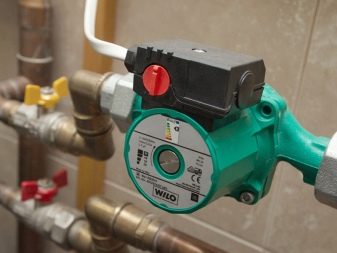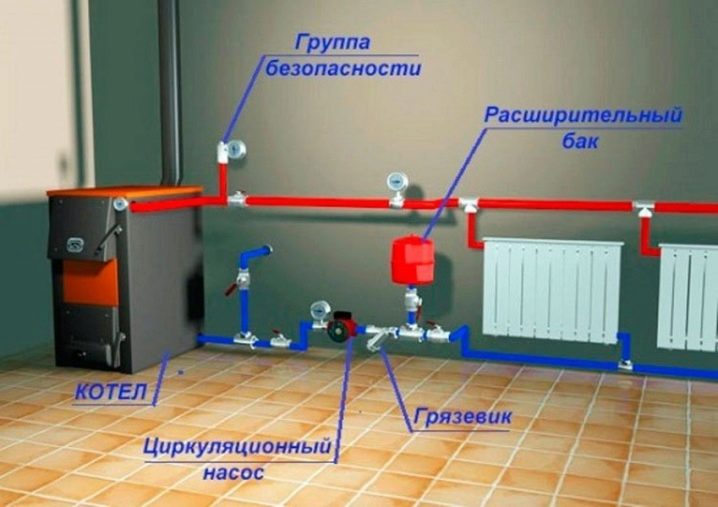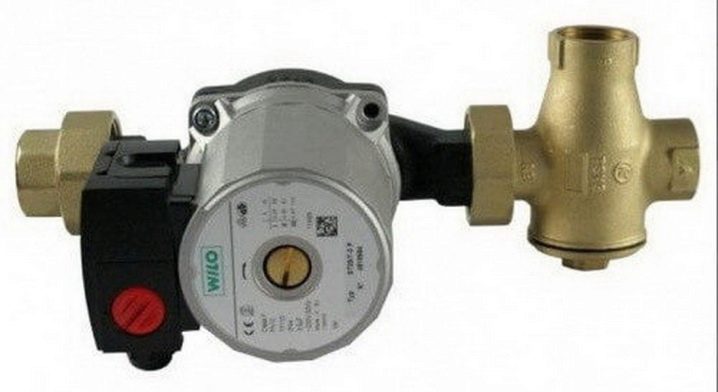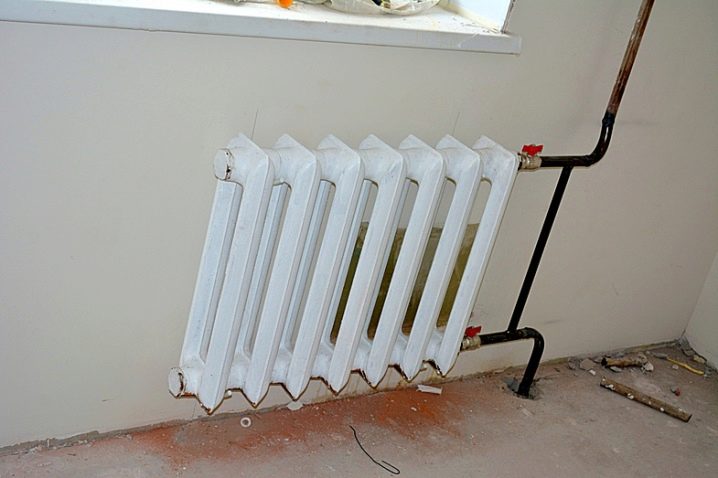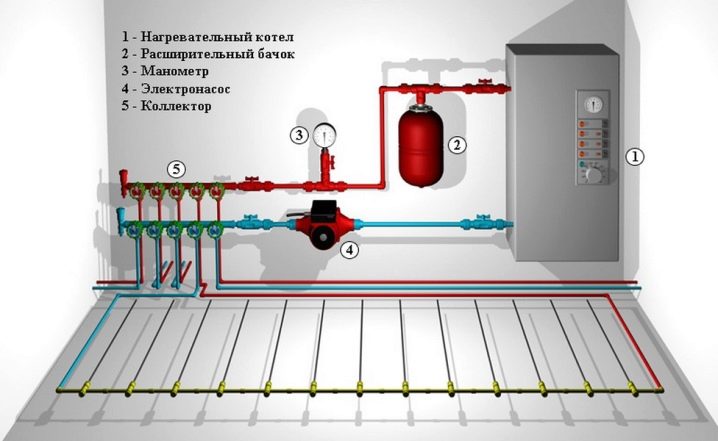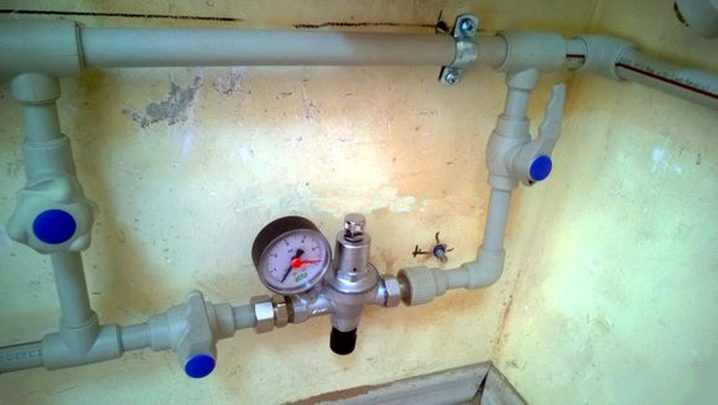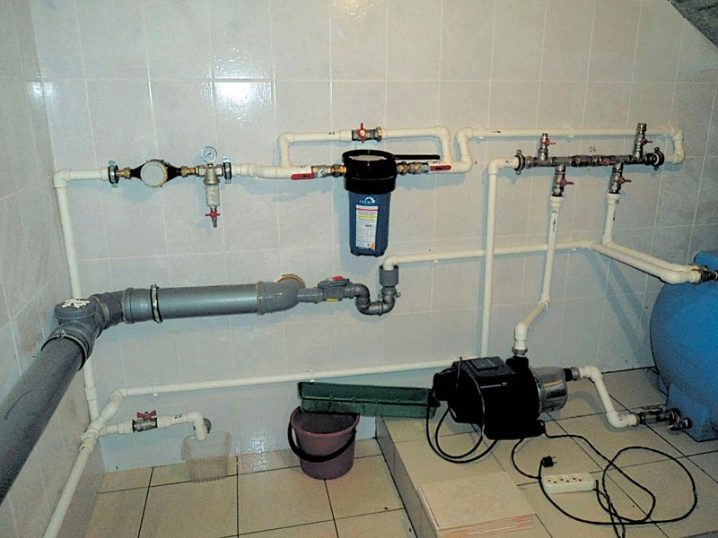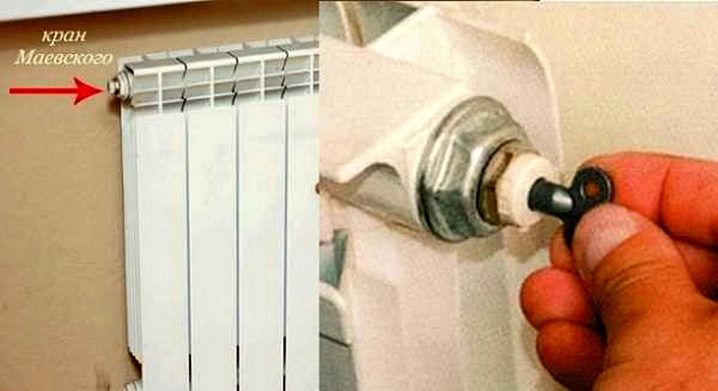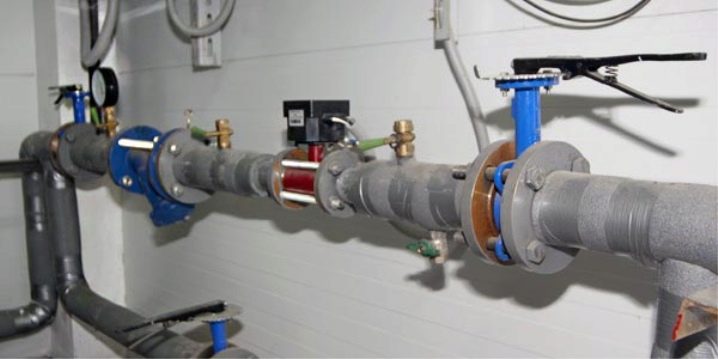Bypass: what is it and how to install it?
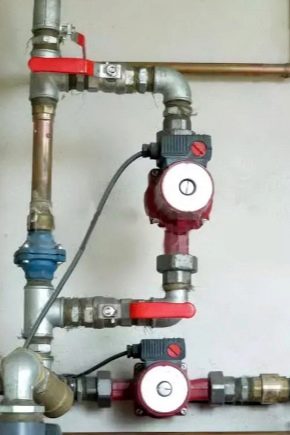
Heating systems are created from a variety of components, and not all of them are equally familiar to people. If the function of the boiler, pump or regulator is generally understood, the idea of the bypass is more blurred. Meanwhile, the importance of such equipment, its correct selection and consideration of features during installation are very high.
What it is?
It is not difficult to understand that even insignificant at first defects in the actions of engineering systems and communications can turn into serious problems. Delivered discomfort and even health hazards in case of disturbances in the operation of heating can hardly be overestimated. Therefore, attentive, thoughtful homeowners should be engaged in the prevention of such problems.A significant role in it is played by the bypass, which is widely used both in heating circuits and in water supply systems. Its design is not particularly difficult - it is just a jumper in the form of a pipe, supplemented by regulating devices.
Through the bypass valve provides the passage of fluid (drinking water or coolant in the heating system) away from a particular technical unit. If it is very simple - this is a workaround for water in case of unforeseen situations. If everything is working normally, the flow moves calmly and measured along the jumper. But under certain conditions, the locking element overlaps and the liquid rushes away from the previous path. This action is achieved because the bypass diameter is invariably smaller than that of the pipe that supplies water to it.
The use of such a device allows you to:
- make noticeably easier maintenance work on pipelines;
- increase the efficiency of technology;
- reduce unproductive energy costs;
- radically solve the problems of filling pipes and other water infrastructure with air;
- guarantee a relatively stable action even in situations that are different from normal.
Sometimes you may encounter arguments that the bypass is unprofitable. In fact, this is not the case - installing such a device makes it possible to save a lot of energy. The reduction of water supply to the battery is up to 35%, and therefore it is possible to reduce the consumption of thermal energy by about 15%. Since many real systems consume a lot of heat, there will be no negative consequences. A more detailed picture can be understood in consultation with experts.
Kinds
The wide area of use has forced designers and engineers to create the most diverse equipment for specific purposes. The differences between the bypasses are due either to the type of locking reinforcement or to the intended purpose. Products with a crane belong to the mechanical group. All control of such a device is done manually by manipulations with a crane, located mainly in the central part of the jumper. It is allowed to use both three-way and ball overlapping devices, this is not reflected on the principle of operation.
The bypass line can also be made using a valve. This is a completely autonomous device from people, which is not regulated in the process of work. The rubber from which the ball valve is made gives it excessive buoyancy. Such a technique is usually used in direct conjunction with a pump that circulates water. Connecting them to each other allows for simultaneous start.
Despite the convenience and ergonomics of the automated scheme, it is not applicable everywhere. It is allowed to use such devices only in circuits with perfectly clean liquid. Inside the old metal pipe quite often there are scum, rust, scale and impurities. In contact with the soft valve, they are able to quickly disable it. And the inability to fully open or close the course of the liquid will deprive the automatic circuit of the main advantage.
Radiator bypass type (with or without thermostat overlay) implies installing them near heating batteriesThat allows you to turn off such batteries if necessary.Another type is pumping, it is always installed next to the pumping apparatus and, along with a full stop, makes it possible to adjust the mode of their operation. It is necessary to completely block the work of a particular component in order to repair or replace it. At the same time, the water flow will pass freely through the bypass, connecting the remaining radiators and the boiler (or parts of the water supply system) as stable as possible. Also, backup power systems have to be used to overcome the objective weaknesses of a single-pipe heating system.
In it, the coolant is inevitably not distributed evenly enough. For objective reasons, the consistent supply of radiators turns into liquid cooling, and already in the last heating devices it circulates with very low efficiency. But if a bypass is mounted before the radiator, the problem is somewhat mitigated. A certain proportion of the heated water reaches without loss of heat even to the farthest corners and goes backwards calmly. Such an advantage in extremely long and branched contours is especially valuable.
In a similar way, it is possible to regulate the thermal efficiency of radiators even in two-pipe systems. All that is needed is an overlap of the crane in a certain place. Further, the coolant will only flow to areas where there is a need for it. The bypass is also installed in those houses where the power supply is unstable. The closure of the valve, which supplies liquid through a temporarily inoperative pump, allows you to restore a stable action of the system as a whole. Yes, natural circulation is less effective than artificial circulation, but in such a situation it is not necessary to choose.
The ball valve in the bypass is covered when required:
- repair the pump;
- replace it after a breakdown;
- clean the dirt from the filter grids.
The bypass injection circuit is small and is designed specifically for systems mounted in a small area. Valve type is always made of standard size, in such a bypass the built-in pump, filters and taps are set in a straight line. For your information: it is forbidden to install bypasses that have pumps, if the boiler already has its own circulation source. The formation of a parallel stroke is made in accordance with the requirements of the SNiP.These standards must be considered when selecting components, up to minor details.
How to choose?
There is no doubt that the bypass is really needed for domestic purposes. However, in order to meet your expectations, you need to carefully select the right equipment and take into account all the nuances. Automatic valves and conventional faucets can be either short or long. Their diameter is represented by either DU40 or DU50. It is advisable to supplement the water system with a bypass in front of the measuring nodes, which will allow getting water even when dismantling the meters.
Wiring diagram
In order for the bypass to work properly, it must not only be correctly selected, but also correctly installed. Usually make the connection of one edge of the bypass pipe to the pipe connection, and the other - to the discharge circuit. The section from the bypass to the inlet is equipped with locking parts that either permanently transfer the flow to the other side, or divide it into two parts. To be able to completely shut off the flow of fluid to the equipment, the crane is mounted on the branch pipe. The simplest option is a pipe with tees connected from both sides.
Such unmanaged bypasses have a continuously open lumen. In most cases, such devices are needed to supply water to radiators. Since it invariably moves along a route that has minimal hydraulic resistance, the cross section on vertical products must be smaller than that of the main lines. Bypasses intended for lower wiring, form with the same diameter as in the main section, and only the outlet pipe is reduced. It is recommended from time to time to scroll the ball valves to prevent them from blocking during long periods of inactivity.
In addition to calculating the distance, it is necessary to take into account the fact that stop valves cannot be placed on bypass bridges in multi-storey buildings. In case of careless handling or automatic triggering, other heat consumers can be disconnected from the main line. But near the pump that provides circulation, such equipment should be put necessarily. Radiators connected to the collector and two-pipe wiring options should not be connected to the bypass, since there is no point in this. Pumps are connected to the bypass if the system is designed for the movement of water by a natural flow.
In such cases, of particular importance are:
- collector for acceleration;
- compliance with the design slope of the highway;
- required clearance of any pipe.
The choice of layout is determined by whether there is free space. Bypass when creating a warm floor is an integral part of the mixer. To prepare the coolant, you need to use a mixing unit with three-way valves that allow a strictly limited amount of water to pass through. The rest of it is discharged through the bypass, after mixing with the cold liquid left the collector, then moves in the direction of the boiler. Of particular importance is the bypass in the heating line, where hot water is supplied by a solid fuel boiler.
There he helps to make a small circulation loop in the harness. The bypass channel is connected to the supply line with the most heated water; another section is connected to the three-way valve of the return line. Therefore, water is returned to the boiler, which is heated to at least 50 degrees. The motive of such a decision is the prevention of violent corrosion, which often overtakes firewood or coal-fired boilers. Separately it is necessary to say about the dead-end heating system and the introduction of bypass into it.
The dead-end version is one of the varieties of the two-pipe contour. Rings, which are used for circulation, have very different lengths. Their configuration is divided into vertical and horizontal formats. A vertical is created by switching each instrument into a top-down riser. The closer the rings are to him, the shorter they are; The reverse side of this solution is the non-uniformity in the velocity of water circulation.
Therefore, in its pure form, such a system is not capable of heating parts of the house in exactly the same way. Practicality is questionable, and this decision is acceptable (no more) only in an apartment building. A horizontal dead-end system is formed if a direct and return pipe is connected to the heaters. The dimensions of the connecting nodes and the pipes themselves are exactly the same, which greatly simplifies the work of designers and installers. In addition, the horizontal version lowers the consumption of materials, but makes it difficult to balance the work of radiators.
In any case, the dominant pipe is removed from the heat source. On it, the heated fluid penetrates into the compensating tank, where there is a drain and a signal pipe. The bypass is mounted either on the input to the boiler or on the output from it.This is determined by the project guidelines. The tank serves to output the upper pipeline, from which the fluid is already flowing along the wiring towards the individual radiators.
Installation
One of the key requirements - narrowing the jumper compared to the pipe to which it is connected, is already familiar. Violation of this rule will not allow liquids to penetrate fully into a specific device. Installation of the bypass is made as far as possible from the riser, but it requires a close approach to the serviced device. It is forbidden to mount lintels in any other way than horizontally - this can lead to an increased accumulation of air bubbles. Prior to work, 100% of the water from the system is supposed to be drained.
Often bypasses try to install using welding machines. Beforehand, the mechanism will have to be removed, and after that, choosing the most convenient point on the pipe that delivers water, make holes in this place. They are formed in such a way as to match the diameter of the lintel. It is first inserted as tightly as possible, and then welded. Now you need to mount on the thread, which was previously connected radiator, locking parts.And, finally, the radiator is installed in its original place, where it needs to be included in the system and attached with brackets to the wall.
Doing everything with your own hands is also possible. Before starting work, you will again have to turn off the radiator from the system, dismantle it.
Then:
- on the inlet pipe using branded clutches screwed bypass;
- opposite edges serve for fastening the locking reinforcement;
- transfer fixation points of the dismantled device;
- put it in the newly allocated area;
- connect to the system correctly, as follows from its device;
- fix the battery using brackets.
Considering the great complexity of modern heating systems, it is recommended to entrust the installation of by-passes to professionals. Even better, everything will be done simultaneously with the installation or replacement of other components. High-quality installation includes necessarily pressure testing after assembly, as soon as this procedure shows whether all the work was done correctly or not. But at the same time, self-installation should not cause any problems. The main thing is to carefully calculate everything and eliminate errors.
It is advisable to use fully finished products or form them from separate units. When there is no experience, it is advisable to choose ready-made structures, this reduces the risk of an error. In principle, it is impossible to put a bypass directly on the riser, however, an excessive approach to the heating equipment is too bad. Then the device will be broken, and its effectiveness will be insufficient. Directly, the bypass must have positions for support or ready fastenings.
Excessively removed fasteners in a heated form turns the pipe and makes it ugly in appearance. If it is necessary to revive the old heating circuit, install a bypass block with a pump that provides circulation. In addition, ball valves (not reducing the speed of the fluid) and a non-return valve will be required. Maximum attention should be paid to the selection of the locking reinforcement and the determination of the diameters of the working parts. A pair of tees and ball valves is mounted on each bypass pipe.
Getting acquainted with a particular device, you need to focus on its intended purpose. This determines whether a valve is required for adjustment, a thermal regulator, or a return valve. Install all the details you need in the course of the water, the countdown is from the filter. Carefully check that the parts were of high quality and work smoothly. The appearance of pores, especially large irregularities in the weld; parts connected by thread are normally unscrewed, dismantled without any extra effort.
Tips
A bypass will work more stable if it is added with a filter.
Filtering is required:
- when used to transfer heat to hard water;
- in a long time used and worn system;
- in the heating circuit, where expensive pumps, boilers, radiators or pipes are connected.
In addition to coarse mechanical cleaning, in many situations a more thorough, scrupulous preparation of water in the heating system is required. Of course, there is no special need to install fine filters there to trap dirt up to 100 microns in size. But magnetic traps that prevent the spread of scale and rust, will be quite useful devices. They can be mounted both with a tie-in and outside.Restrict horizontal contours only in a one-story building.
As for the use of bypasses in apartment buildings, they are no less beneficial there than in private housing. The rate of change in the heating of batteries due to such a device increases significantly. They are more flexible and flexible. This situation is excluded when the street has already become warmer, and the central network has not had time to react to it, and delivers heat as in a recent severe frost. If regulators are used in the heating system, bypasses also turn out to be useful, they reduce the destructive effect of water pressure.
A one-pipe heating system requires a jumper in any case, but in a two-pipe design it turns out to be an unnecessary link. Radiator units or plumbing devices are installed independently. If you disable any of them, the other components will work efficiently, as before. The only exception is the use of three-way thermal valves. But such a scheme is used extremely rarely, because it is economically unjustified.Do not confuse the two-pipe system and the presence of two risers, it is not always related to each other.
In this two-pipe circuit, the radiator inlets are connected to autonomous mutually risers. If the radiator is connected to a single pipe rupture, the second one goes by itself and is needed for the feed vector from above. This is only a riser, and the one-pipe system will not cease to be. Accordingly, the bypass turns out to be an absolutely necessary element in this case. Single-pipe contours are often created in order to save in private houses, for example, “Leningrad”.
It is not recommended to install any fittings in the interval from the riser to the bypass, such an arrangement can lead to accidental overlap of the main heating line. Often there are complaints that removing the regulator from the pipe and bringing it closer to the battery causes unpleasant aesthetic effects. But such claims are wrong, because bypassing is not difficult to disguise. And strict adherence to technical standards is extremely helpful in maintaining the system’s performance. It is thought in advance where they put the ball valves, isolating the radiator, or thermostats.
Nominal diameters in the aisles of the heating risers are supposed to be made unchanged from the outlet to the tee, which is planned to put a bypass. The diameter of the pipeline supplying fluid to the radiator, in the area from the tees, is designated as DN2. Standard rules stipulate that the pipes here should exceed the size of the riser. The bypass itself is one size smaller than the supply loop and two sizes inferior to the riser. But the proportions described relate to unmanaged vehicles.
The tee will divide the water flow into the main branch going to the radiator and into the bypass passing through the bypass. If the system is equipped with thermostats, the jumper allows you to reset the excess coolant. This allows you to escape from excessive pressure and unusual vacuum. Bypass can be used to adjust the flow of water or to stop it if you put a faucet. But in multi-unit housing, such a configuration is unacceptable.
Adjustment in the one-pipe heating system of a private house cannot be achieved by ball valves. This task is solved by needle valves, which change the flow intensity as accurately as possible.An alternative is the use of an adjusting block valve. When it is configured, even the most powerful random effect will not affect the operation of the system. In most cases, vertical risers are placed at right angles.
But instead you can put a tap at the same angle with a diameter identical to the diameter of the riser itself. To connect a metal pipe to the polypropylene section, threaded fittings are commonly used. A polypropylene pipe with an outer diameter of 3.2 cm can be placed on the gap between the axis of the risers and the bypasses. At the inlet, the tee is counted on just such pipes. The output of the tee allows you to connect a pipe 2.5 cm, and the circuit connected to the bypass - 2 cm.
To purchase a part with the necessary linear characteristics is quite difficult. However, there is a solution: you need to take the most common type of tee 25-20-25. An adapter is welded to the inlet to allow the connection of a pipe with an external cross-section "32". It is undesirable to make a very large segment for connecting to the radiator, in many cases it is reduced to zero. Bypass in such a system is made of 2 cm pipe, and then there are fittings connecting the welded joint of polypropylene with metal.
To the radiators attach fittings that help to connect the cap nuts "American" sample. Such items do not usually need to be bought additionally, most often they are included in the delivery kit of thermostats. When the use of a stopcock is planned, it should be the same - with a choke and with a cap nut. So simplify installation, at the same time seeking to obtain a collapsible connection. Metalplastic pipes and connecting fittings are connected by similar principles.
There are a number of schemes with which you can organize the entire circuit solely from metal pipes. Welding is still used for this purpose, but its popularity is steadily declining. Almost always missing massively sold parts with well-designed thread. If the distance between the radiators meets the standards, you can simply buy a fully completed bypass, which is already equipped with thread sections at the factory. On sale there are a number of bypass nodes that help deploy a hidden connection, make the connection of the batteries below.
In many cases, the decision has to be made without selecting a ready-made scheme, simply by the particularities of the place.The jumper height is not regulated by any standards and daily practice, it is determined individually. Pumps on the bypass, if any, must be surrounded by valves on the right and left. This measure allows you to freely dismantle the device when the need arises. Put the jumper and need to collectors "warm floors" or on the "comb" supply and return collectors.
The purpose of its application is not so much the disconnection of water, but the exception:
- power surges;
- hydraulic shocks;
- sparse sites.
The pump, creating a general pressure, is not flexible enough. All circuits are required to be supplied with coolant separately. Balancing valves can theoretically work themselves, but it is the bypass that helps dampen the negative effects of pressure drops. Solid fuel boilers are equipped with bypasses due to the irregularity of their work, since the high temperature at the time of heating creates a tremendous load on the heat exchanger. It is for this reason that jumpers are used to shorten the warm-up cycle time.
A three-way valve, blocking the access of fluid to the external circuit, allows it to move strictly through the bypass, therefore the warm-up time is minimal, as is the associated risk.As soon as the small circuit reaches a certain temperature, the valve automatically systematically opens the input from the return circuit. Circulation slowly covers the coolant contained in the common circuit. Everything happens exactly as smoothly as possible; automation and mechanics consistently control this.
Change the pump in the bypass is as follows:
- the tap on the main line opens, the tap on the pump closes.
- unscrewed from the complex pump, mounted another;
- coolant flow resumes;
- after unscrewing the screw on the front of the device, air escapes;
- the valve mounted on the bypass line is closed.
The operating time will decrease several times, so it is not necessary to stop heating. Special attention should be paid to the use of bypass not in heating, but in water circuits. Then they allow you to simplify the switching of water to hot water from the water heater. Depending on personal preferences, you can even submit it to a cold faucet.
The purchase of the simplest bypass will cost 1200-1300 rubles, the cheaper options cannot be considered qualitative, since it is almost always a marriage or a product of dubious origin.
If old-fashioned cast iron batteries or steel convectors with ribs are installed in the house, they are designed mostly for work without jumpers. In such cases, it is required to carefully calculate everything and collect as much information about the system as possible. Mixing water is advisable not only when using solid fuel boilers, but also when placing heaters. Installation of the bypass on the towel rails is about the same as in hot water supply. Technical features of the device are subject to similar requirements.
A common mistake is to install a circulating pump outside the bypass. In this configuration, he has to push the coolant not only through the locking valve, but also after a couple of taps. Thermal efficiency decreases sharply, and the power consumption and the noise generated by the pump increase. There is a ridiculous myth that circulating equipment on the bypass of the main riser does not work. In fact, the situation is reversed: if there was no backup circuit, it could not work.
Guided by this myth, part of the house masters put the pump in the return bypass,positioning the ball valve between the two inputs. Such a measure leads to the fact that before starting the pump, the valve will have to be locked, and when stopped, it must be unlocked. And if you ever forget about it, there will be serious problems. If you mount a standard non-return valve (with a spring), it in this configuration will work poorly or does not work at all, because the hydraulic resistance is excessive. Neither should open the check valves, removing the spring from them or rearranging these parts.
It is necessary to start a system with similar equipment, how quickly “original acoustic effects” and just squelch will be revealed. The sooner there will be a movement of the coolant, the more often extraneous sounds will be heard. The most effective way of arranging the heat pipe is the use of a float check valve for the gravity system. Similar mechanisms are present in the range of almost all major companies that produce components for heating systems. When the equipment operates in the natural circulation mode, the float opens and does not block the course of the coolant; it is necessary to start the pump in the bypass,the valve clogs the main riser and redirects fluid along the bypass.
Attention should be paid to consumables and valves, such as valves. Cranes equipped with a movable rod, have an important drawback - the diameter of the saddle is almost 50% inferior to the diameter of the heating pipe. This circumstance significantly reduces the quality of circulation, because the valves of the type mentioned in bypass are not recommended. In order not to suffer from this and not to open the ball valves manually all the time, you need to use bellows valves of twice the increased section. It is much harder to find suitable fittings for the central channel, in parallel to which the bypass is located.
They need various types of valves to ensure the normal pressure of hot water and its quality. If the coolant is not too good, it makes sense to mount the filter on the horizontal sector of the pipeline. Placing it on vertical fragments does not justify itself.
In any case, it is necessary to give preference to the valves from well-known, long-proven manufacturers. To prevent airflow overflow problemsIt is recommended to mount Mayevsky's crane.
Fitters should not be too carried away by welding, threaded connections are much more practical and more convenient. This will become even clearer at the first serious malfunction or repair, when the thread can be removed by plumbing tools, and it will be almost impossible to remove the welded parts. Choosing nuts, you can buy fasteners with gaskets from both rubber and silicone. Removing and replacing the valve, it is required to screw the coupling and locknut onto the threads, after which the pipe section is removed from the valve. This work is done with the aid of open-end or gas switches.
Bypasses can be used in water circuits, but there their role is much more modest than in heating products. There jumpers are designed to only help in installing meters and pumps. Instead of measuring the section of pipe that needs to be cut, and mounting the finished assembly on its basis, it is possible to proceed in another way. The node itself is taken apart, the pump is removed and the pipeline segments are connected to the main pipe. Then reattach the pump and start working on the branch pipe.
The pipeline is gently lifted up to prevent physical contact with the pump. After that, they either bind it tightly, or send a pair of pipes on opposite courses. Between these connections, a tap is inserted with a jumper surrounding it; a similar technique allows you to build bypasses with your own hands and for other plumbing fixtures Of course, the hot water redirect node needs to be designed and built so that it does not interfere with the work of the security group. That is why, despite the absence of visible difficulties, it is quite reasonable to turn to professionals for help in preparing and installing bypasses.
How to install a bypass with your own hands, see the next video.

